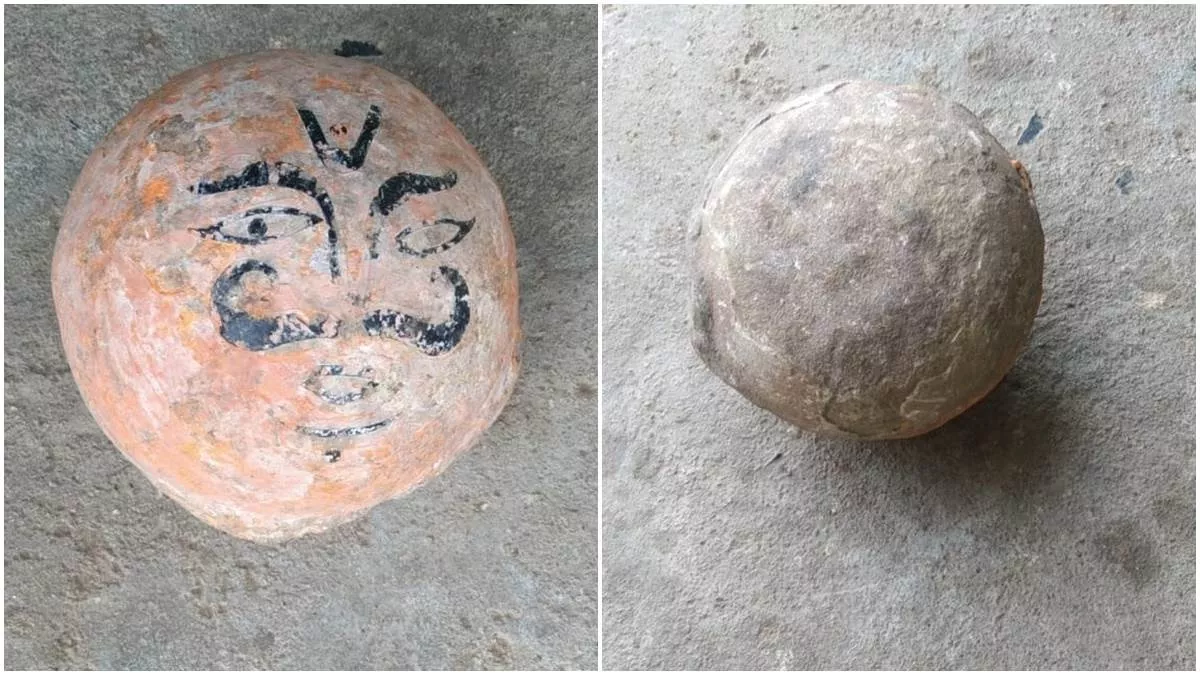In a groundbreaking revelation, rocks once worshipped as sacred Kuldevtas in Madhya Pradesh have been identified as fossilized dinosaur eggs.
Madhya Pradesh, known for its rich cultural and historical heritage, has recently witnessed a startling revelation that challenges several decades of beliefs. Rocks that have been revered as ‘Kuldevtas’ or ancestral deities, by local communities are now believed to be dinosaur eggs. This groundbreaking discovery not only reshapes the cultural narrative of the region but also opens new frontiers in paleontological research.
Geologists and paleontologists stumbled upon this revelation while conducting routine geological surveys in the Balaghat district of Madhya Pradesh. Initially dismissed as ordinary rocks, further analysis using advanced imaging technologies revealed the distinct characteristics of fossilized dinosaur eggs
The rocks, revered and worshipped for generations as sacred entities, have unveiled themselves as an abundant source of prehistoric fossils. This revelation not only illuminates the historical biodiversity of the region but also prompts a reconsideration of our comprehension regarding the coexistence of humans and dinosaurs.
The village, where the rocks are situated, has a long-standing tradition of worshipping these formations as ‘Kuldevtas’, believing them to be the protectors and guardians of their community. The revelation has sparked a mix of emotions among the residents who are grappling with the intersection of scientific discovery and deep-rooted cultural beliefs.

Local elder, Suresh Tiwari, shared his thoughts on the discovery, “These rocks have been a source of spiritual solace for our community for generations. While it is surprising to learn about their true nature, it doesn’t change the reverence we feel for them. It’s like discovering a new chapter in our shared history.”
The discovery has opened up avenues for collaboration between the scientific community and local residents. Scholars are now working closely with religious leaders and cultural historians to find a harmonious balance between acknowledging the scientific reality and respecting the sentiments attached to these revered formations.
Professor Aparna Desai, an anthropologist specializing in the intersection of science and culture, emphasized the importance of this collaboration. “This presents a unique opportunity to bridge the gap between science and tradition. By involving local communities in the scientific process, we can create a more inclusive narrative that respects both the scientific findings and the cultural significance attached to these rocks.”
The revelation also holds significant implications for heritage conservation in the region. The newfound understanding of these rocks as dinosaur eggs has prompted discussions about creating a designated heritage site that safeguards both the scientific and cultural aspects. Such a site could become a center for education, research, and cultural exchange.
Madhya Pradesh, at this juncture, is not just witnessing a scientific revelation but is also becoming a global example of how communities can navigate the complexities of scientific advancements without forsaking their cultural identity. The coexistence of nature, culture, and science is poised to shape the region’s future, creating a harmonious narrative that embraces both the ancient presence of dinosaurs and the enduring significance of these formations in the collective consciousness of its people. In the heart of Madhya Pradesh, where rocks were once revered as divine protectors, a new chapter is unfolding one that weaves together the threads of geological history, cultural heritage, and scientific progress.
